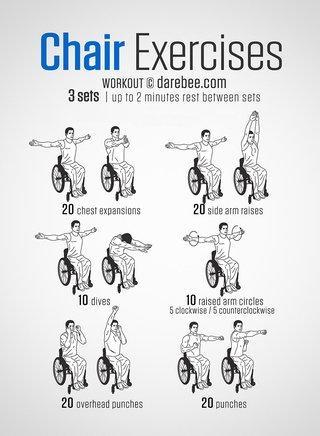Make like an ant?
This #Take5 post is brought to you from Dr Katharine Jewitt from The Open University who shares what we can learn for our teaching and learning online from ants. Katharine is looking back at what we have adapted to this year – highlighting the lessons learned that we can take forward in our practice – especially for those of us who will continue with some (or all) online delivery next year.
For those of you who already feel a bit too ant like in the version of Technology Enhanced Learning that is emerging post-pivot – please try to think of these ants as self-determined – acting with power and agency in their ant lives – for that is the spirit of the post.
(Katharine did write this much earlier than today – but we saved it up as a coda to the year – any ‘wobble’ with tenses are down to us!)
Key words: responsive blended learning, student learning online, digital wellbeing, digital socialisation, learning environment, student support, blended learning, teaching online, student engagement, inspiring learning
Teguh Mujiono/Shutterstock.com: An image showing four cartoon ants in a row with their hands on each other’s shoulders.
Ant Music
I remember when I was young, my cousin’s family and I stayed in a holiday home in Mallorca. Every day, on our way out to the beach, we saw a long path of ants making their way through the garden of the holiday home, where we were staying. My cousin and I became fascinated by the ants and every day would set obstacles in their way, such as placing twigs or stones, and then return at the end of the day to find how the ants had overcome our ploys to stop them in their path. I recently saw a photograph from that holiday, which caused me to reflect back on those daily encounters with the ants and how they can teach us some useful lessons for learning development and overcoming some of the many challenges that Covid-19 has had on our teaching this year.
Lesson 1: Make the most of what you have
Even though my cousin and I put obstacles in place, which stopped the ants’ smooth and direct path, they made the most of their surroundings and worked around things. If an obstacle was placed in their way, they instantly worked around it and adapted quickly. They didn’t wait around for something to feel right, they just kept going.
The pandemic has created significant challenges, but we have to make the most of what we have. Focus on the quality of your work, rather than the number of hours. Support your students in focusing on output and knowing what are the most important things to focus on. We all need to empathise with each other’s circumstances and recognise that we are all dealing with different pressures and issues.
Lesson 2: Be disciplined … in the practice of self care
Ants remain disciplined. They avoid temptations and demonstrate self-control. They manage their time and are organised to achieve their goals.
Ant tips: Try and stick to a consistent workload each week and make time to do other things. Even though we might still be unable to do some of the normal things we enjoy, due to various Covid-19 concerns and remaining constrictions, we can still carve time out for things we enjoy and share hobbies with friends and family. Making time to rest and relax is even more important in these times. Encourage your students to do the same.
Lesson 3: Avoid Distractions
No matter how many obstacles my cousin and I tried to distract the ants with, they soldiered on regardless. They did not get distracted and stayed focused on their end goal. They didn’t allow a couple of young, mischievous cousins to get in the way of their objectives and worked around our roadblocks.
It reminds me of how important it has been to support our students in keeping focused when working online. When running online sessions, discuss with students how you will work. I try to keep online chat to a minimum when anyone is talking, so that there aren’t two conversations taking place in the online room at the same time (it’s difficult for dyslexic students otherwise).
I let my students know that I’ll stop regularly to take questions. Students can still use the chat, if they want to pose a question or make a comment, but I stop regularly to read them out, rather than trying to manage both in parallel. Making use of the emoji icons built into the video conferencing tool, also allows you to check everyone is ok at regular points during the online session and take time to pause and reflect.
Being in front of a screen can be very taxing for both you and your students. Build in mini breaks. Ask students to join you in some arm raises or neck stretches. I often display on the screen, one of the NHS desk exercises: https://www.nhs.uk/live-well/exercise/gym-free-workouts/

Video-conferencing takes more strain on us than working face-to-face because we are concentrating so hard on the screen for intense periods. Being permanently focused and attentive is draining. Have time at the end of a session for students to reflect and relax. Build in opportunities to have short chats during the session, for example, asking students how they are taking a break. Use images to spark conversation, such as this graphic created by Karen Horneffer-Ginter:

Lesson 4: Be brave and take risks
Even though the ants on my childhood holiday were faced with risks and issues they had never encountered before, in the form of my cousin and I and our terrible plot to redirect them away from their goal, they faced our challenges head on. Even obstacles that were far bigger than themselves, they were brave and looked ahead and did not falter.
Reflecting back over the past year has shown me how vital it is for us to work even more collaboratively than we did before and to support our students by designing collaborative learning activities with the diversity of our students and their personal situations during the pandemic in mind.
We need to share our experiences of working online, be brave in trying new things in our teaching and know that it is okay to make mistakes. If you are experimenting with a new technological tool to support pedagogy, you’ll be surprised at how accommodating students are and willing to experiment and try things out with you.
Lesson 5: Work as a team
Ants have learned that working individually and out of self-interest is futile. Ants work as a team for greater benefits. Everything they do is to benefit their colony as a whole. They know that they are stronger and better working together.
The pandemic has lengthened our working days to accommodate interruptions. As a result of working from home, we are juggling and sharing the use of rooms, combining a kitchen as an office. Our days are fluid to support homeschooling, child care and looking after family members. The lines between work and non-work life have become blurred.
Ant tip: Building socialisation into our courses is vital, so that students can build their peer-to-peer network and support each other. In my view, we can’t have enough opportunities for students to collaborate and socialise online.
Lesson 6: Work hard and train hard
Ants are noted for carrying a hundred times their own body weight. They work hard and train hard. They are persistent.
This year we have definitely been working hard! Likewise, we as academics, need to find ways to work as a team whilst working remotely. It’s vital we keep in touch, share the workload and share resources. It’s so important that we pool our skills and resources, so that we have a valuable resource bank to dip in and out of. If we all shared one socialisation activity to use in an online session, we’d have several hundred to use throughout the academic year, rather than just one.
Lesson 7: Eat regularly and healthily
Ants eat regularly and they never eat anything alone. Ants keep fit and active on a daily basis.

When homeworking, it’s sometimes hard to make the effort to get out and get moving or to take time to talk to colleagues, but it’s critical we build time into our days to do this. We don’t have the talks in the corridor anymore, which happened naturally within our working day on campus. We must make time for exercise when we are working so intensively and make time to eat properly. Getting out for a run, a walk or a bike ride in daylight hours can make the world of difference to our health and wellbeing.
Ant tip: Build conversations into your online sessions with students, to discuss mental health and digital wellbeing. There are excellent resources available on Mental Health England’s website: https://mhfaengland.org/mhfa-centre/resources/
Lesson 8: Building for the future
My metaphorical ants are always preparing for the future ahead. They are focused and driven on what is urgent and important to secure the future of their colony.
Studying online is not what our students signed up for and it is important to recognise this and support them by regular signposting to help them keep on track. Using a traffic light system on a weekly basis can be a good way to help students know what is important (red traffic light), what to do if they have time after the critical tasks (amber traffic light) and what is optional (green traffic light). Ensure students know what they are expected to do each week and incorporate time for building their digital skills, for example, collaborating online, planning and organising.
Finally, no matter what is now thrown at us, we must remain determined to share good practice to improve student experiences. Avoid re-inventing the wheel. Keep talking, socialising, sharing, experimenting and collaborating!

About Katharine:
Dr Katharine Jewitt (@KatharineJewitt) has worked in HE since 2003 and prior to that worked as a Director managing global operations and supply chains. Katharine’s research interests are in the fields of Computer Supported Collaborative Learning (CSCL), online learning, technology enhanced learning (TEL), digital strategy and learning in three-dimensional and mobile environments. Her PhD research was in the use of virtual reality for work-based learning. Outside of work, Katharine enjoys sailing, coastal walks and living a self-sufficient life on her smallholding in Scotland.
